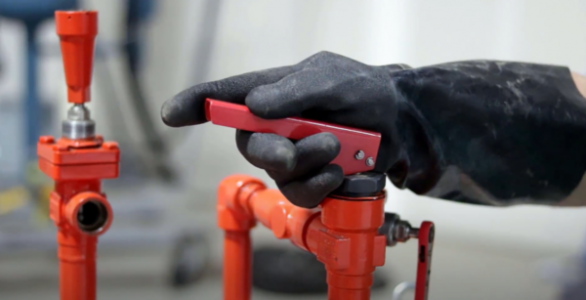Should I Hire a Contractor or Keep it In-House? | Part 5: System Oversight

Eli Macha presented a technical paper at the 2021 RETA National Conference titled IIAR 6: Should I Hire a Contractor or Keep it In-House? This blog series includes excerpts from his technical paper.
Some facilities ask how much they can do in-house, while others want to outsource as much as possible. Before considering what personnel changes or contractor arrangements should be discussed, careful consideration should be made regarding common mechanical integrity tasks. While this is not an exhaustive list, facilities will have a solid direction for their program if they consider each subsequent topic.
Temperature & Hot Gas Defrost Adjustments
While this may seem like a simple adjustment, quite a few facilities rely on contractors to adjust temperature setpoints. Thirty-two percent of facilities completely rely on contractors to make these adjustments. Forty-three percent of facilities only allow their own operators to adjust temperature setpoints and 25% of facilities allow either in-house operators or contractors to make the changes. Training operators to make these changes will allow a facility to be nimble from an operations standpoint, but it also presents another variable the facility may not be comfortable with.
If a facility utilizes a hot gas defrost (HGD) system, it may need to occasionally adjust the defrost cycle or even manually start the cycle from a PLC. Making an error with this type of adjustment may cause a “shock to the system” which could result in an ammonia release. It may be safer to rely on contractors for this task, or it may be worth ensuring in-house operators are properly trained. Two-thirds of those surveyed with HGD systems on an automatic schedule rely completely on contractors to adjust the schedule. For those facilities surveyed who need to manually start their HGD cycle, 53% assign this task to their contractor.
Oil Management
Draining oil from an ammonia refrigeration system is a relatively high-risk activity.[1] Certainly, opening a closed system presents opportunity for an accidental release. On the other hand, properly trained and equipped operators should have little problem staying out of harm’s way. Only one third of the facilities surveyed completely rely on their own operators to drain oil. A facility considering taking on this task should ensure their operators are adequately trained in the oil draining operating procedure. Furthermore, the facility ought to have a respiratory protection program in place which includes the following for the operator: a full-face air-purifying respirator, fit testing, medical evaluation, and training.
While oil draining is a relatively risky procedure, many in the industry find the procedure for adding oil to be simpler. For this reason, 7% of the facilities who rely on contractors to drain oil do not rely on contractors to add oil.
Working with Valves
Without the proper training, many facilities take the stance, “We don’t turn wrenches.” While this extreme position may be necessary in some cases, it is worth considering if skilled, in-house operators can do any work related to valves. If a valve is weeping by, a facility may want to empower their own operators to tighten down the valve, instead of needing to wait for a contractor to arrive. Over half of the facilities surveyed indicated their employees are trained to make these types of valve adjustments.
When it comes to exercising and lubricating manual shut-off valves, as required by ANSI/IIAR 6-2019 Table 11.1.6 Maintenance Items (b) and (c), 60% of facilities completely rely on contractors. Anecdotal evidence suggests this simple maintenance activity poses a relatively high risk for starting an ammonia release that may not be easy to stop.
Finally, most facilities (64%) prefer contractors to replace their pressure relief valves (PRVs) at the 5-year interval. Fourteen percent of facilities indicated this can be done in-house or by contractors. A skilled and equipped operator may find replacing PRVs doable when a three-way valve is present but may defer the replacement of PRVs without the three-way valve to a contractor.
[1] Peter R. Jordan, Technical Paper #7 Case History: A Study of Incidents in the Ammonia Refrigeration Industry (Alexandria, VA: International Institute of Ammonia Refrigeration, 2020), 29.
The previous blogs in this series are available in the following links:
- Part 1: Introduction
- Part 2: Research Methodology
- Part 3: Completing Daily Rounds In-House
- Part 4: Outsourcing Annual Inspections

Leave a Reply